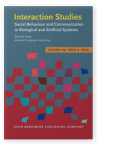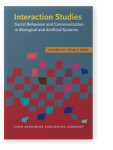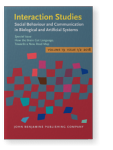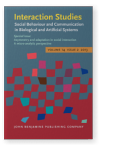Federico Rossano
List of John Benjamins publications for which Federico Rossano plays a role.
2023 Soundboard-using pets? Introducing a new global citizen science approach to interspecies communication Animal-Computer Interfaces: Novel Approaches for Studying Animal Behavior, Cognition and Communication, Pepperberg, Irene M. (ed.), pp. 311–334 | Article
The first studies that sought to establish two-way communication between humans and great apes led to important findings but were nevertheless heavily criticized for their training methods, testing procedures, and claims. More recently, hundreds of pet owners around the world have begun training… read more
2020 The comparative neuroprimatology 2018 (CNP-2018) road map for research on How the Brain Got Language How the Brain Got Language – Towards a New Road Map, Arbib, Michael A. (ed.), pp. 370–387 | Chapter
We present a new road map for research on “How the Brain Got Language” that adopts an EvoDevoSocio perspective and highlights comparative neuroprimatology – the comparative study of brain, behavior and communication in extant monkeys and great apes – as providing a key grounding for hypotheses on… read more
2020 How apes get into and out of joint actions: Shared intentionality as an interactional achievement Interaction Studies 21:3, pp. 353–386 | Article
Compared to other animals, humans appear to have a special motivation to share experiences and mental states with others (Clark, 2006; Grice, 1975), which enables them to enter a condition of ‘we’ or shared intentionality (Tomasello & Carpenter, 2005). Shared intentionality has been suggested to… read more
2020 Social manipulation, turn-taking and cooperation in apes: Implications for the evolution of language-based interaction in humans How the Brain Got Language – Towards a New Road Map, Arbib, Michael A. (ed.), pp. 151–166 | Chapter
This paper outlines how the focus on how communicative signals might emerge and how the capacity to interpret them might develop, does not yet explain what type of motivation is required to actually deal with those signals. Without the consistent production of appropriate responses to the… read more
2018 The comparative neuroprimatology 2018 (CNP-2018) road map for research on How the Brain Got Language How the Brain Got Language: Towards a New Road Map, Arbib, Michael A. (ed.), pp. 370–387 | Article
We present a new road map for research on “How the Brain Got Language” that adopts an EvoDevoSocio perspective and highlights comparative neuroprimatology – the comparative study of brain, behavior and communication in extant monkeys and great apes – as providing a key grounding for hypotheses… read more
2018 Social manipulation, turn-taking and cooperation in apes: Implications for the evolution of language-based interaction in humans How the Brain Got Language: Towards a New Road Map, Arbib, Michael A. (ed.), pp. 151–166 | Article
This paper outlines how the focus on how communicative signals might emerge and how the capacity to interpret them might develop, does not yet explain what type of motivation is required to actually deal with those signals. Without the consistent production of appropriate responses to the… read more
2014 “Requests” and “offers” in orangutans and human infants Requesting in Social Interaction, Drew, Paul and Elizabeth Couper-Kuhlen (eds.), pp. 335–364 | Article
This paper presents two pilot studies of sharing situations in orangutans and human infants. We report on the communicative behaviors that elicit food transfers, the contingencies associated with gesture selection and the (relative) success in obtaining food. We focus on the sequential unfolding of… read more
2013 Sequence organization and timing of bonobo mother-infant interactions Asymmetry and adaptation in social interaction: A micro-analytic perspective, Nomikou, Iris, Karola Pitsch and Katharina Rohlfing (eds.), pp. 160–189 | Article
In recent years, some scholars have claimed that humans are unique in their capacity and motivation to engage in cooperative communication and extensive, fast-paced social interactions. While research on gestural communication in great apes has offered important findings concerning the gestural… read more





